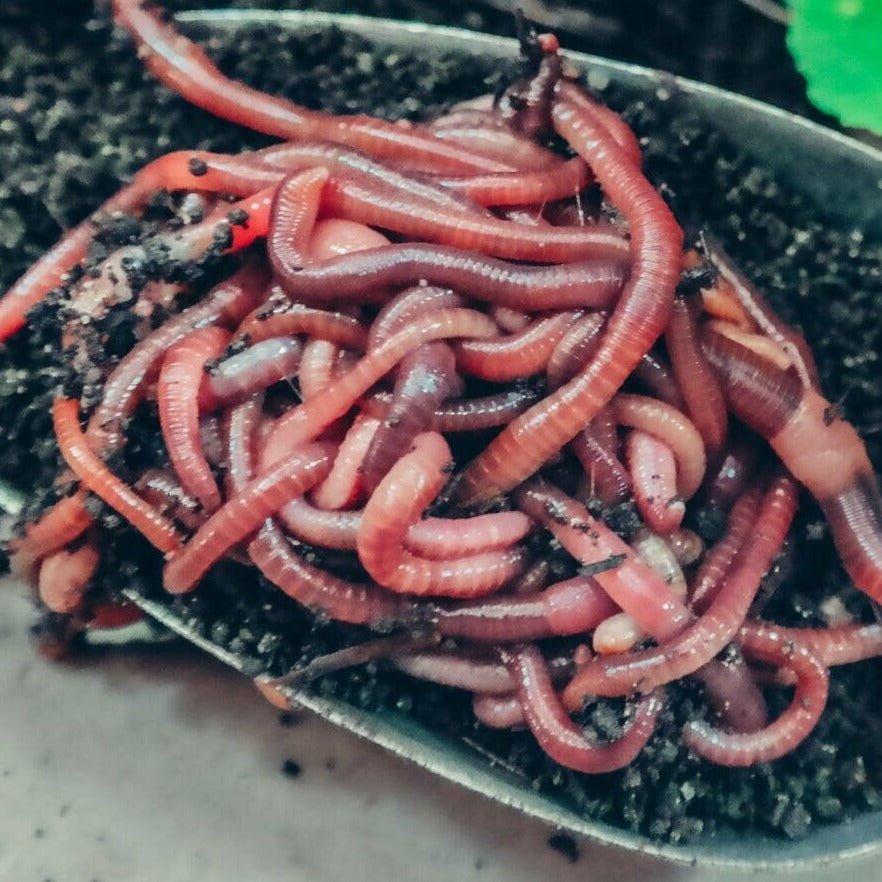Red Wiggler Worms - Necessary for Healthy And Balanced and Efficient Gardens
Red Wiggler Worms - Necessary for Healthy And Balanced and Efficient Gardens
Blog Article
Taking Full Advantage Of the Advantages of Red Wiggler Worms: A Comprehensive Guidebook for Home Gardeners and Urban Farmers
In the world of lasting gardening methods, red wiggler worms stand as unsung heroes, quietly changing organic waste into nutrient-rich spreadings that can function marvels for dirt health. By checking out the details of just how to efficiently care for and make best use of the benefits of red wiggler worms, individuals can unlock a wealth of opportunities for enhancing the sustainability and efficiency of their horticulture ventures.
Recognizing Red Wiggler Worms
Red Wiggler worms, renowned for their reliable composting abilities, are a species of earthworms widely used in vermiculture methods. These worms, medically recognized as Eisenia fetida, thrive in decaying organic material, making them perfect candidates for composting.
One secret attribute of Red Wiggler worms is their reproductive price. These hermaphroditic animals have both women and male reproductive body organs, allowing them to replicate quickly under desirable problems. A mature Red Wiggler can produce multiple children in a short duration, making certain a steady population within a composting system.

Establishing a Worm Bin
When establishing a worm container for vermiculture functions, correct preparation and interest to information are vital for developing a conducive setting for Red Wiggler worms. Begin by selecting an ideal container for your worm bin.

Area the worm container in an amazing, dark location away from straight sunshine and extreme temperatures. Routinely keep track of the wetness levels, adding water if the bedding really feels completely dry or half-cracked. Feed the worms a well balanced diet of fruit and vegetable scraps, avoiding citrus fruits, onions, and spicy foods. By following these actions, you can establish up a flourishing worm bin that will efficiently refine organic waste into nutrient-rich vermicompost for your yard.
Feeding and Keeping Worms
Guaranteeing a nourishing and balanced diet is critical for the health and productivity of Red Wiggler worms in a vermiculture system. It is crucial to stay clear of feeding them citrus fruits, onions, garlic, milk products, meat, and oily foods as these can be damaging to the worms or create unpleasant odors in the container.
Proper moisture levels are additionally critical for the health of Red Wiggler worms. By diligently checking their diet regimen, dampness, and ecological problems, home garden enthusiasts and city farmers can maintain a efficient and healthy and balanced Red Wiggler worm population for composting purposes.
Collecting Worm Spreadings
To effectively draw out nutrient-rich worm castings from the vermicompost, a methodical harvesting process is vital for making the most of the composting benefits. Red Wiggler Worms. The primary step in gathering worm castings is to urge the worms to migrate away of the bin. This can be attained by putting fresh food scraps on one side and leaving the other side uninterrupted for a couple of days. Once most of worms have relocated to the side with fresh food, the castings can be collected from the opposite side.
After the castings have been collected, it is essential to divide any type of continuing to be worms from the castings to avoid hurting them throughout storage space or application. One effective technique is Find Out More to develop conical piles of castings under intense light. Worms will instinctively move away from the light, permitting very easy splitting up and removal.
Finally, the gathered worm spreadings need to be stored in a cool, dark, and dry location to keep their top quality and efficiency as a nutrient-rich soil change. By complying with these actions, home gardeners and metropolitan farmers can optimize the advantages of red wiggler worms in their vermicomposting systems.
Using Worm Castings in Horticulture
The unification of nutrient-rich worm spreadings right into yard soil can substantially boost plant development and total dirt wellness. Worm spreadings, additionally referred to as vermicast, are an all-natural plant food generated by red wiggler worms as they damage down raw material. These spreadings are abundant in vital nutrients like nitrogen, phosphorus, potassium, and advantageous microbes that promote plant development and boost dirt framework.
When using worm castings in gardening, it is important to mix them extensively right into the soil or use them as a leading clothing around plants. The slow-release nature of worm castings guarantees a consistent supply of nutrients to plants in time, decreasing the risk of nutrient leaching and advertising long-lasting soil fertility. In addition, worm spreadings help improve dirt oygenation, water retention, and microbial activity, producing a healthy setting for plant origins to flourish.

Final Thought
In conclusion, the usage of red wiggler worms in home gardening and metropolitan farming can dramatically profit dirt wellness and plant development. By recognizing just how to establish up and keep a worm container, feed the worms effectively, and harvest their nutrient-rich castings, gardeners can take full advantage of the benefits of these earthworms.
In great post to read the realm of sustainable gardening practices, red wiggler worms stand as unsung heroes, quietly transforming natural waste right into nutrient-rich spreadings that can function marvels for dirt health and wellness.When establishing a worm bin for vermiculture purposes, proper prep work you can find out more and focus to information are vital for producing a favorable atmosphere for Red Wiggler worms. The first step in collecting worm spreadings is to urge the worms to move to one side of the bin. Worm castings, also known as vermicast, are an all-natural fertilizer produced by red wiggler worms as they damage down organic matter. By understanding how to establish up and keep a worm bin, feed the worms properly, and gather their nutrient-rich castings, gardeners can take full advantage of the benefits of these earthworms.
Report this page